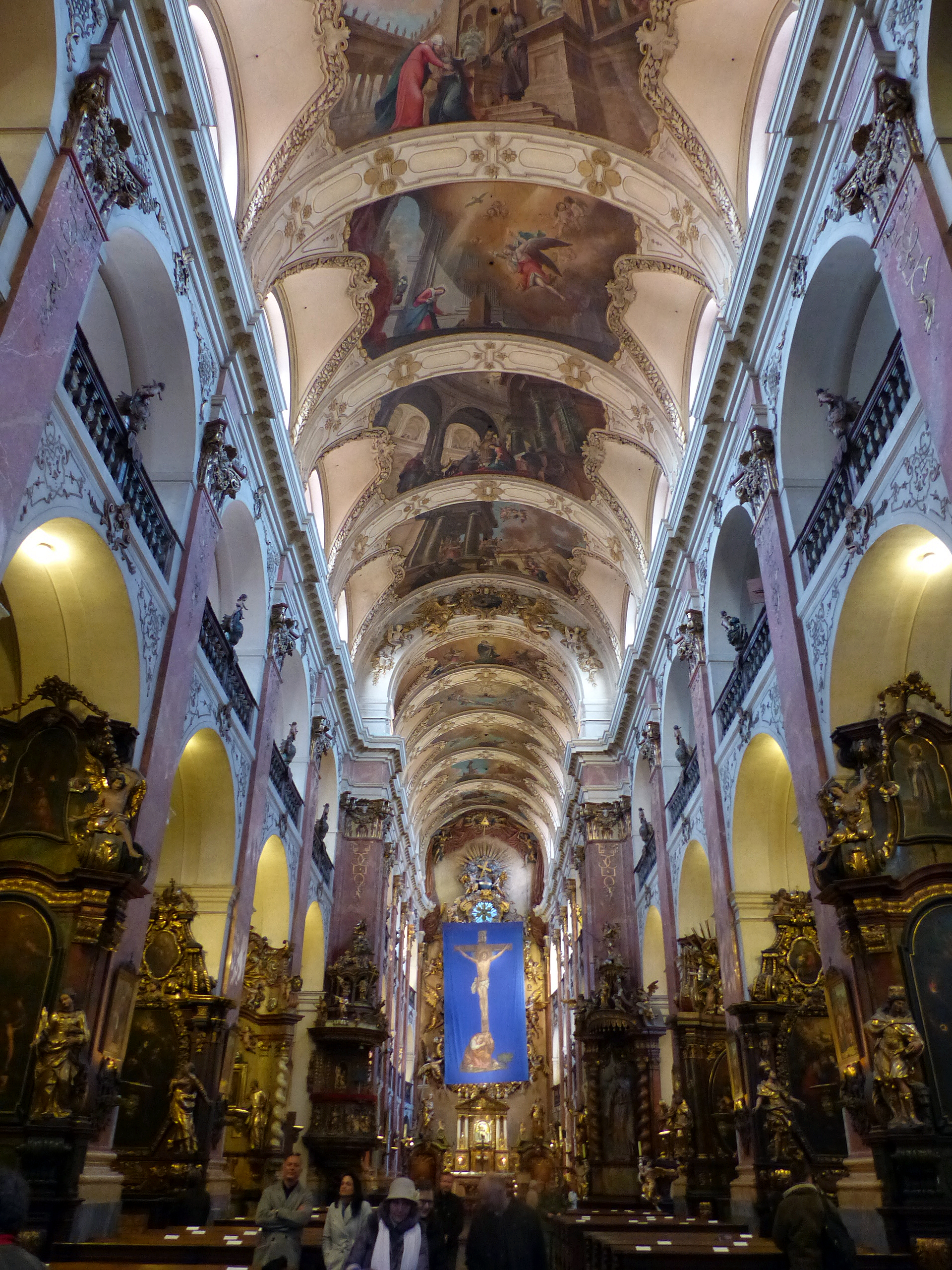Basilica of St James the Greater
The church of St James the Greater (sv. Jakub Větší) was founded in 1232 in Prague’s Old Town, possibly as a shrine to hold a relic of St James acquired by the Přemyslid king Otakar I. By 1244 the church had become part of an extensive and unusually elaborate Franciscan monastery, situated at a crucial crossroads just behind the entrance into the Old Town Square.
In 1319, following fire damage, work started on a much enhanced triple-naved basilica of enormous length and height. Completed in 1374 under Charles IV, the church was one of several honoured with the emperor’s lying-in-state four years later.
In 1689, a band of anti-Habsburg French arsonists were responsible for a much more serious fire in the heart of the Old Town. It spread over a wide area and engulfed the church and over 700 houses. Over the next 50 years, the church was rebuilt in the baroque style according to plans by the architect Jan Šimon Pánek. The only remaining gothic elements are the groundplan and the body of the clocktower.
The interior is lavishly furnished with twenty-one side chapels, ceiling frescoes by Frantisek Voget showing the life of Mary and the glorification of the Trinity (1736), and the tomb of Count Vratislav of Mitrovice, designed by J.B. Fischer von Erlach. The organ case, dating from 1705, is by Abraham Stark of Loket.
The west end facade features three highly theatrical reliefs showing the life of St James, flanked to the left by St Anthony of Padua and to the right by St Francis of Assisi. They were sculpted in 1695 by Ottavio Mosto of Padua, who was strongly influenced by Bernini and was also responsible for the original statue of Saint Wenceslas on the Charles Bridge.
Francis of Assisi (by Ottavio Mosto of Padua, 1695)













